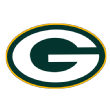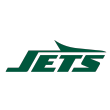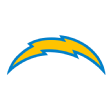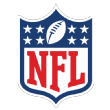NFL quarter-season awards: Barnwell's picks for MVP, best rookies and more

With four games of the NFL season in the books for most teams, it's about time to get to the quarter-season awards. I hand these awards out every year for a few reasons. One is to serve as a good reminder of what we were thinking at the time; 12 months ago, as an example, Mike Vrabel was a reasonable Coach of the Year candidate.
To try to get a handle on who is currently winning the major award races, I went through several of the long-standing Associated Press awards and identified my top three candidates after Week 4. To be clear, in each case, I'm talking exclusively about how a player has performed over the first month of the season as opposed to their chances of winning it at the end of the season, although I'll discuss the latter as I explain each pick. I'm also nominating the players I want as opposed to the players I think are the actual favorites to win.
In addition, I also came up with a few awards that aren't yet official, including stuff like Acquisition and Miscalculation of the Year. I'll finish with Most Valuable Player, but let's start with rookies and go from there.
Jump to a major award:
DROY | OROY | COY
MIP | DPOY | OPOY | MVP
Defensive Rookie of the Year
3. Devin Bush, LB, Pittsburgh Steelers
This is an award in which there's no clear favorite after four weeks. I could make the entire list out of edge rushers, though I only ended up using one of the three spots on a pass-rusher. Even among the players I ended up nominating, I could justify any order to myself. There's a lot more differentiating to come.
I think Bush, for whom the Steelers traded up in April and drafted at No. 10 overall, could have a Derwin James-sort of rise as the season goes along and he grows more comfortable in his role. He has already improved over the first month of the year, as he followed an embarrassing game against the Seahawks in Week 2 with much better performances against the 49ers and Bengals. This story is admittedly easy to fall in love with; who doesn't want to say they were behind the next great Steelers linebacker from the start?
Bush leads the league with three fumble recoveries, but I'd characterize that as something closer to a trick than a repeatable skill. For one, hedidn't recover any fumbles during his time in Michigan. Defenders who don't force fumbles also rarely recover a significant amount of the fumbles other people create. He has those fumble recoveries without a single forced fumble; when you look back at linebackers over the past 20 years, no linebacker has recovered more than four fumbles he didn't force himself in a single season.
2. Darnell Savage, S, Green Bay Packers
There's a lot to like about what we've seen from Savage through four games. It's telling that the Packers have played Savage on every one of their defensive snaps and felt comfortable moving him around the defense to play in multiple roles. Even young players who have that skill set can struggle before their team places them in one role on a full-time basis, with Lamarcus Joyner's tenure with the Rams as an example. The Packers seem comfortable doing everything they do with Adrian Amos with Savage, too. That sort of versatility makes it easier for Pettine to mask his intentions.
Savage, the No. 21 pick, has shown some early signs of being a playmaker, with one pick and one forced fumble over the first month of the season. The interception was pretty, a diving grab of a pass Joe Flaccoseemed tothrow with a question mark and a shrug, but the forced fumble was the better play and indicator of what Savage can do. He started the snap threatening as a blitzer before dropping into coverage against Kyle Rudolph. When Kirk Cousins began to scramble out of the pocket, Savage shed Rudolph's attempted block and managed to punch the ball out of the quarterback's hands as he went to the ground. About the only thing Savage didn't do was recover the fumble.
1. Brian Burns, DE, Carolina Panthers
The defensive awards tend to go to pass-rushers, and with apologies to Chase Winovich, Josh Allenand a handful of other defenders, Burns has been the most disruptive pass-rusher from this rookie class through four weeks. The No. 16 overall pick has 2.5 sacks, but where he really stands out is with nine quarterback knockdowns, which is tied for second in the NFL behind Shaq Barrett. Pass-rushers usually turn about 45% of their knockdowns into sacks, and Burns' aptitude in getting to the quarterback suggests his sack totals are likely to rise. He is the only defender in the league with at least two quarterback hits in each of his first four games.
Burns ranks 14th in ESPN's pass rush win ratemetric, which paces all rookie pass-rushers, although Allen is just behind him at 15th. Of Burns' sacks, 1.5 would qualify as coverage sacks, but the other one is one of the filthiest sacks of the season, with Burns making Cardinals tackle Jordan Mills look like a grandfather. Burns is already showing off uncommon bend and flexibility as a pass-rusher. He's already a problem for opposing offenses.
Offensive Rookie of the Year
3. Josh Jacobs, RB, Oakland Raiders
The only running back taken in the first round, Jacobs has been the best back of the class so far. He's also the only full-time starter of the bunch, but he has been efficient with his chances. The former Alabama back is averaging 5.0 yards per carry and ranks 13th in the NFL in success rate.
You might chalk up Jacobs' success to an expensively assembled offensive line, but the No. 24 pick has yet to play a single game behind his full first-choice line. The Raiders are down to third-stringer Denzelle Good at right guard with Gabe Jackson sidelined by a torn MCL and Jordan Devey done for the year after tearing his pectoral muscle. Jacobs has also made his own opportunities, as he's averaging 2.4 yards after first contact, which is third best in the league among backs with 50 carries or more.
2. Terry McLaurin, WR, Washington
Though McLaurin missed a Week 4 game against the Giants because of a hamstring injury, he has been the only bright spot for what has otherwise been a depressing Washington offense. McLaurin racked up 257 yards and three touchdowns over the first three games of the year, and those numbers would have been higher if Case Keenum hadn't missed an open McLaurin on what should have been a 73-yard touchdown in the opener.
The No. 76 overall pick is averaging 2.2 yards for every route he runs this season. That's 17th in the NFL and ahead of guys like Odell Beckham Jr., JuJu Smith-Schusterand Julio Jones. I don't expect McLaurin to keep that up over the course of the whole season, but it's pretty clear that Washington has a legitimate starting receiver. I'm putting McLaurin ahead of Marquise Brown of the Ravens solely because nearly half of Brown's receiving yardage and both of his touchdowns came against the Dolphins in Week 1.
1. Gardner Minshew, QB, Jacksonville Jaguars
I didn't expect this one! One of the higher-drafted quarterbacks has a better shot of coming away with this award, but Daniel Jones has played only about 60% as many snaps as Minshew, and the Jaguars' quarterback has significantly better numbers than Kyler Murray. Though the first overall pick led the Cardinals back for a dramatic tie against the Lions in Week 1, and Jones followed with a last-gasp victory over the Buccaneers in his first start, Minshew brought the Jaguars back twice in the fourth quarter to take and retake the lead against the Broncos.
He has also improved with more experience. He was mostly checking things down and playing conservative football over the first two weeks of the year, but in the wins over the Titans and Broncos, he has averaged an even 9 air yards per attempt. The book on Minshew coming out of Washington State was that he lacked an NFL-caliber arm, but on the final drive of the Broncos game, Minshew had no trouble hitting a 16-yard deep out to Dede Westbrook on the left sideline from what was nearly the opposite hashmark. The sixth-round pick's size was supposed to be a problem, but it helped him duck away from pass pressure and scramble to convert a third-and-14.
When I wrote aboutMason Rudolph a couple of weeks ago, I noted that it wasn't a good sign the new Steelers starter had fallen to the third round. Rudolph is 6-foot-5 and 236 pounds. He's a good athlete. If a quarterback with prototypical size has NFL skills, they go in the first round. (Several people brought up Tom Brady as a counter, which is like using a winning lottery ticket from 15 years ago as proof that it's smart to play the lottery.)
If there was a late-round quarterback the scouts would miss on and underestimate, though, it would be someone like Minshew. The 23-year-old is just under 6-foot-1 and ranks in the sixth percentile of height for quarterbacks. He doesn't have prototypical arm strength. He spent two years as an anonymous passer at East Carolina before transferring to Washington State, where he excelled in his lone season in Pullman. His coach there was Mike Leach, who runs the Air Raid and doesn't think scouts are very smart.
Should the Jaguars tell Nick Foles he's going to be a backup when he comes back? No. It has been only three starts for Minshew, and there have been long stretches in those games where the Jags haven't been able to do anything on offense. They are also realistically committed to paying Foles at least $21.1 million after 2019, and Foles had thrown all of eight pass attempts as a Jaguars quarterback before breaking his collarbone. At the same time, the Jaguars clearly have something with Minshew. He's the best quarterback Jacksonville has drafted during the David Caldwell era.
Coach of the Year
3. Matt LaFleur, Green Bay Packers
The most common Coach of the Year candidates are coaches who take over a new team and lead them to a much-improved season during their debut. Well, seven NFL teams hired coaches from outside their organization this offseason. LaFleur's Packers are 3-1, and the other six teams are a combined 2-20-1. Welcome to the list, Matt!
I'm not sure I'd put LaFleur higher than third, though, because the offense he was brought in to revitalize is still struggling. The Packers are 16th in offensive DVOA after four weeks; it has been Mike Pettine's seventh-ranked defense propelling the Packers toward the top of the NFC North. Offensive coaches can win Coach of the Year while riding their back of their defense -- Matt Nagy won with the league's best defense and its 20th-ranked offense by DVOA last season -- but I want to see the offense take a step forward before I really get behind LaFleur as a candidate.
The changes to the offense haven't been quite as extreme as some might have expected. Rodgers has been under center more frequently in 2019, but after throwing 83.3% of his passes out of the pistol or shotgun in 2016-18, he has thrown passes out of similar spots 74.7% of the time so far. The former MVP has thrown downfield out of play-action from under center only 17 times through four games, and Rodgers has posted an 84.7 Total QBR on those throws.
I think we'll see the offense produce longer drives in the weeks to come, although losing receiverDavante Adams for some spell of time with turf toe will hurt. The Packers have converted only 30.6% of their third and fourth downs through four games, which ranks 29th in the league. They might also very well be 4-0 if it weren't for two drives against the Eagles stalling out inside the 5-yard line. LaFleur is the most likely of the new faces to win this award.
2. Sean McDermott, Buffalo Bills
I've gushed about the Bills' defense repeatedly in recent weeks, and the duo of McDermott and defensive coordinator Leslie Frazier deserves tons of credit for molding a defense without big names into arguably the league's best.
The Bills didn't come up with a victory over the Patriots in Week 4, but they were the most competitive team against New England this season by a significant margin. They're 3-1 with 36-year-old Frank Gore as their primary offensive weapon, with the future Hall of Famer responsible for more than 30% of the touches on offense.
Even after last weekend's loss to the Patriots, the Bills have a 54.1% chance of making it back to the postseason for the second time in three years under McDermott, according to the ESPN Football Power Index (FPI). I have big-picture concerns about second-year quarterbackJosh Allen, but the Bills have built a good enough team to win without competent quarterback play.
1. Bill Belichick, New England Patriots
Has there been a week over the past 15 years where anybody doubted Belichick was the best coach in football? Virtually every person who works inside the NFL or watches it closely would pick him as the league's best coach, and with that knowledge, he has won this award ... three times. It took 14-2 seasons in 2003 and 2010 and that famous 16-0 campaign from 2007 to earn Belichick this nod. Consider that 14-2 seasons weren't enough for him to win this award in 2004 (when it went to Marty Schottenheimer and the 12-4 Chargers) or 2016 (Jason Garrett's 13-3 season with the Cowboys).
Guess who's back? Even after a narrow victory over the Bills, the Patriots finished the first quarter of the season with the third-best point differential of any team since the 1970 merger at plus-95. It's coincidentally the best mark any team has posted since 2007, and you can probably guess who pulled off that feat. The Pats also face the league's easiest schedule over the remainder of the season. FPI projects the Patriots to win 13.1 games; if they top that total, I think it's about time for Belichick to win this award again.
Coordinator of the Year
3. Greg Roman, OC, Baltimore Ravens
Did anybody expect the Ravens to be third in offensive DVOA after the first month of the season? While a chunk of their performance is driven by their 59-point outburst against the Dolphins in Week 1, it's worth noting that the three other offenses that played the league's worst team all scored between 29 and 31 points. The Ravens doubled that mark, and that's with Lamar Jackson sitting out the fourth quarter and Baltimore choosing to kneel on the Miami 5-yard line late in the game.
The speculation that Jackson was going to be exposed to start the 2019 season is gone. The 2018 edition of Jackson, who averaged 17 rushes per start, was going to be difficult to sustain. This version is averaging a much more sustainable nine carries per game. He's also completing nearly 65% of his passes despite throwing his average pass 9.7 yards in the air, the fifth-longest average distance in the league. Jackson turned the ball over twice in September. Take running out of the equation and he's still the eighth-best passer in the league by Total QBR through the first month of the season.
Roman, who built offenses around Alex Smith and Colin Kaepernick in San Francisco and then around Tyrod Taylor in Buffalo, was the ideal fit for Jackson in Baltimore. This is one of just 10 offenses since the merger to average 7.5 yards per pass attempt and 5.5 yards per rush attempt. Five of the other nine teams finished in the top six in points scored at the end of the season. Strangely, defense is the thing to be worried about in Baltimore.
2. Todd Bowles, DC, Tampa Bay Buccaneers
Do you remember how bad the Bucs were on defense last season? They finished last in the league in DVOA. They allowed opposing quarterbacks to post a passer rating of 110.9, the same figure Russell Wilson posted on the other side of the ball. The Bucs posted the second-worst red zone defense since 2001. Oh, and star pass-rusher Jason Pierre-Paul went down during the offseason with a neck injury and hasn't played in 2019.
By points allowed, the Bucs haven't been significantly better, given that they rank 30th in points allowed per game. DVOA, though, pegs them as the seventh-best defense in the league. How does that work? For one, Jameis Winston has thrown three pick-sixes, which amounts to 21 points that have nothing to do with the defense. Tampa's defense has scored twice on its own and created nine takeaways, fourth in the league and more than half of its season-long total from 2018. The Bucs also have faced 46 drives through four games, the seventh most in the league, giving opposing offenses more chances to score.
I'm not sure this is going to be the seventh-best defense in football over the remainder of the season, but Bowles has managed to coax some upside out of this unit. Unsurprisingly from a Bowles defense, Tampa is blitzing a ton -- 41.8% of the time -- and allowing the league's 12th-fewest yards per dropback when it does. Tampa also leads the league in rush defense DVOA and yards per carry against.
1. Kellen Moore, OC, Dallas Cowboys
It has to be Moore, right? Even after a rough night against the Saints in New Orleans, the Cowboys rank second in offensive DVOA and are virtually right in line with the Chiefs. This same core -- sans returning center Travis Frederick -- ranked 24th in offensive DVOA a year ago. As much as Ezekiel Elliott's role in the offense has been fetishized, his carries per game and yards per carry are both down. The offense has gotten significantly better as Elliott has played a smaller part.
Moore has been able to take Dak Prescott to a new level, and while Prescott has played his tail off through four weeks, the Cowboys have made it easier for their star quarterback to succeed. Dallas was 11th in play-action rate last season; this season, it is all the way up to third, and Prescott has a league-best 97.6 Total QBR on play-action passes. Of course, the fourth-year quarterback is a lowly second-best in the league when the Cowboys don't use play-action, too. We still have to see the Cowboys excel as their schedule gets tougher, but Moore is an easy pick here.
Comeback Player of the Year
3. Delanie Walker, TE, Tennessee Titans
The track record of healthy tight ends making an impact during their age-35 seasons isn't exactly lengthy, as only six tight ends in league history have finished that year with 500 receiving yards or more. Things got more complicated when Walker went down in the opening week of 2018 because of a severe ankle injury, costing the former 49ers tight end the remainder of the season.
What did Walker do to announce his return? He caught two touchdown passes in a blowout victory over the Browns, of course. Walker is on pace for 68 catches and 648 receiving yards while playing just under half of Tennessee's offensive snaps. He has struggled at times because of a nagging knee issue, but for Walker to get back on the field -- let alone look like the tight end we saw before the injury -- is impressive.
2. Cooper Kupp, WR, Los Angeles Rams
Kupp suffered a pair of injuries to his knee in 2018, first tearing his MCL on a horse-collar tackle before tearing his ACL one month later. In his final four healthy, complete games during the 2018 season, he racked up 24 catches for 412 yards and five touchdowns. Over the first four weeks of the 2019 season, a returning Kupp has grabbed 32 passes for 388 yards and three scores.
There's not yet a 70-yard touchdown in the mix for Kupp like there was against the Vikings a year ago, but he has become a more integral part of the offense as the Rams move away from huge doses of Todd Gurley. Over 2017 and 2018, Kupp was targeted on 22.1% of his pass routes. So far in 2019, that's up to 28.4%, which ranks seventh among receivers with 100 or more routes run. Kupp, one of the few Rams' skill-position players still on a rookie deal, is in line to get a massive extension this offseason.
1. Travis Frederick, C, Dallas Cowboys
I don't think it's realistic to pick anybody else. Frederick's recovery from Guillain-Barré syndrome didn't have the familiar time frames and rehab markers that players can rely upon in recovering from broken bones and muscle tears. While athletes in other sports have suffered from the rare disorder, Frederick was the first prominent player to suffer from the ailment during an NFL career. The Cowboys initially believed he could come back quickly after being diagnosed last summer, but their star center ended up missing the entire season.
Thankfully, Frederick made his way back to the team and has been something close to his usual self during Dallas excellent start to the season. His pass block win rate is at 88.4%, which isn't far off from the 92.6% mark he posted during his last healthy season in 2017. The Cowboys' pivot also hasn't committed a penalty during the first four games.
Acquisition of the Year
3. Jamie Collins, LB, New England Patriots
It just so happens that all three of the acquisitions here are front-seven pieces. The Patriots seemed ready to wash their hands of Collins when they traded him to the Browns in 2016, with rumors suggesting he had a habit of freelancing to try and make plays. You can imagine that wouldn't go over well with the guy whose team motto is "Do Your Job." Collins signed a four-year, $50 million deal with the Browns, but he was playing as a strong-side linebacker and part-time player before the Browns cut him in March.
The Patriots signed Collins to a one-year, $2 million deal in May and found a motivated, talented player. He has been all over the place for the Patriots, but he has been most noticeable as a blitzer. The Pats have sent 39 blitzes this season, and Collins has been on the field for 30 of them. Belichick's defense hasn't pressured the opposing quarterback once across those other nine blitzes. He gives the Patriots an athletic linebacker at a fraction of his previous contract with the Browns.
2. Clay Matthews, Edge, Los Angeles Rams
Even before Matthews hit the market, I suggested that the Rams should make a move for Matthews. It was too good of a story, given that Matthews grew up in Southern California and walked on to the USC football team, where he played at the Coliseum. The Rams, of course, now play on the same field.
I wasn't surprised when Matthews signed a two-year, $9.3 million deal with the Rams. What has surprised me, though, is just how effective he has been since joining the team. In four games, he already has more sacks (five) than he did over the entirety of 2018 (3.5). One of those sacks was admittedly a play against the Panthers where Carolina just decided not to block him. My favorite play from his season so far actually wasn't a sack.
When the Browns were facing fourth-and-the-game against the Rams in Week 3, I thought Matthews' decisions on the edge were a reminder of his football IQ. Baker Mayfield had been bailing to the right under pressure throughout the game, so with Matthews lined up outside of the right tackle, it was going to be his job to contain. Watch the play and you'll see Matthews barely engage the right tackle, clearly waiting for Mayfield to bail. When the quarterback does, Matthews is in perfect position to chase him down and force a panicked throw, which ended up intercepted. Matthews struck the perfect balance between pass-rusher and spy on the play, and it helped the Rams to a road win.
1. Shaq Barrett, Edge, Tampa Bay Buccaneers
I'm going to write about Barrett in the Defensive Player of the Year section. In short, the Bucs gave Barrett a one-year, $4 million deal and would have been thrilled if he responded with nine sacks and three forced fumbles. He has done that with 12 games to go.
Miscalculation of the Year
3. New York Jets sign Ryan Kalil
I was in favor of this deal. The Jets needed to surround Sam Darnold with all the help he could get, and after adding guardKelechi Osemele to their line on a salary dump from the Raiders, coaxing Kalil out of retirement made sense. New York gave the long-time Panthers standout a one-year, $8.4 million deal to end his brief retirement and immediately installed the 34-year-old as the starting center.
As is the case with most things related to the Jets this season, Kalil's tenure in green hasn't gone well. He has two penalties in three games after never topping three in a 16-game season. The Jets benched Kalil for a period during the Week 2 loss to the Browns. Coach Adam Gase has suggested that the Jets might make changes to their offensive line after returning from the bye, and while it's probably too early to give up on the five-time Pro Bowler, Kalil certainly hasn't helped what has been a dismal offensive line.
2. Melvin Gordon holds out
If Gordon was trying to prove his value to the Chargers by expecting them to struggle in his absence, it didn't work. The Chargers went 2-2 without the running back in the lineup, and while Austin Ekeleraveraged only 3.9 yards per carry, he was efficient and productive while shouldering a much larger workload. The relatively low yards per carry mark comes from Ekeler not breaking anything longer than a 19-yard run on his 56 carries; despite missing the team's best lineman in left tackle Russell Okung, Ekeler is posting a 52% success rate, which is 16th in the league. In 2018, Gordon's only season with above-average efficiency as a pro, he posted a success rate of ... 53%.
The evidence that the Chargers suffer with Gordon out of the lineup isn't really there. Since the start of his career, the Chargers have gone 26-29 (.472) and averaged 23.7 points on offense with him on the field. Without Gordon, meanwhile, they're 6-7 (.462) while averaging 22.9 points. He is a talented, versatile player, and you can understand why he wants to get paid. The difference between him and Ekeler, though, isn't worth the $11 million or so between Ekeler's contract and what Gordon reportedly wants as an average salary on a long-term deal.
1. Everything related to Antonio Brown
This was all a big waste of time. The Steelers lost the least, since they ended up with two draft picks, but they were still stuck with $21.1 million in dead money on their cap for Brown in 2019. The Raiders paid a $1 million signing bonus for a player who didn't want to be in Oakland, although they probably made some of that money back in jersey sales. The Patriots paid about $100,000 for Brown's one game with the team, but given that it came against the Dolphins, I suspect they could have made do without the mercurial wideout.
The guy who lost the most, though, was AB himself. He forced his way out of his professional home in Pittsburgh. He did just enough to void $30 million in guaranteed money to leave the Raiders, and when it all seemed as if Brown had managed to end up in a better situation and had a shot at making more money with the Patriots, he cost himself that opportunity by sending threatening text messages to a woman who accused Brown of sexual assault. It's difficult to see a future in the league for Brown given his behavior on and off the field.
Defensive Player of the Year
3. Logan Ryan, CB, Tennessee Titans
Best cornerback in football is always going to be an inexact science, but you can make a strong case for Tennessee's top corner through four weeks. Ryan has filled up the stat sheet, with 1.5 sacks, a tackle for loss, two interceptions and six pass deflections, with the latter figure tying for the league lead. With Ryan as its lead corner in the slot, Tennessee has allowed a passer rating of just 62.8 to slot targets this season, the second-best figure in the league.
Advanced metrics also love Ryan's play. The NFL's Next Gen Stats project that targets thrown at Ryan should have been completed 61.8% of the time. Instead, those passes have been completed just 46.2% of the time; the resulting 15.6% difference is the third best in football among corners with 100 snaps in coverage or more. There are plenty of corners who deserve recognition -- we've seen great quarter-seasons from the likes of Jaire Alexander, James Bradberryand Tre'Davious White -- but Ryan narrowly sneaks onto the list here.
2. Devin McCourty, S, New England Patriots
The Patriots remain far enough ahead of the pack on defense that it seems impossible to leave their starters off this list entirely. Thankfully, there's one obvious candidate to sneak on -- the elder of New England's McCourty twins. The longtime Patriots stalwart has an interception in each of his first four games, making him the first player to pick off a pass in four straight games since the 2016 season.
I don't think McCourty is going to continue to intercept one pass per game -- his career record is seven, set when he was a cornerback in 2010 -- but he's still playing lights-out football even beyond the interceptions. It's impressive when you have more interceptions than catches allowed through one month of the season, and the Next Gen Stats peg McCourty as allowing three catches on eight targets for 40 yards through one month.
He's also second in the league among safeties in Ballhawk Rate -- which measures the percentage of snaps where a player deflects or intercepts a pass as the closest defender in coverage -- at 62.5%. The long-underrated McCourty has made just one Pro Bowl since that impressive rookie campaign. He should be in line for another nod.
1. Shaquil Barrett, Edge, Tampa Bay Buccaneers
Where on earth did this come from? Barrett, an undrafted free agent in 2014, was a breakout candidate years ago in Denver across from Von Miller, but when he got his chance to start in 2017 with Shane Ray going down, Barrett flopped. He racked up four sacks on 12 knockdowns while playing two-thirds of Denver's snaps, and the Broncos closed his path to the starting lineup by drafting Bradley Chubb after the season.
The Bucs signed Barrett to a one-year, $4 million deal this offseason. His numbers so far are unreal. He has nine sacks, three forced fumbles, seven tackles for loss, two pass breakups and an interception of Jared Goff. To put that in context, since the league started counting sacks as an official stat, no player in history has topped nine sacks over his first four games. Barrett is tied with Mark Gastineau (who finished his season with 22 sacks), Kabeer Gbaja-Biamila (13.5), and Kevin Greene (15).
Those three totals tell you Barrett is probably not going to stay on this pace and end up with 36 sacks. The 26-year-old only has 10 quarterback hits, which we would typically associate with a sack total somewhere closer to half of his actual output. He has racked up a couple of coverage sacks and had one in which the 49ers essentially decided not to block him and paid the price almost immediately.
You know what, though? Every pass-rusher has sacks like that, and Barrett has come across the majority of them by beating opposing tackles. He's hardly a one-trick pony, either; watch the spin move he put on Rob Havenstein to set up Ndamukong Suh's game-sealing touchdown against the Rams. Barrett's four sacks against the Giants all came in different ways.
Let's say he retreats to his old self and his previously established level of play from Denver over the remaining 12 games of the season. He would finish the year with 11.5 sacks and 17 knockdowns, numbers the Buccaneers would have been delighted to see for how much they paid. That sort of production also would get him a big deal in free agency (or the minimum of a franchise tag) next offseason.
There's little on the tape to suggest Barrett is supremely lucky or a gimmick, either. He might not get the same level of production over the remainder of the season, but he's playing like a superstar. He's the biggest reason the Bucs have finally looked competent on defense for the first time in years.
Offensive Player of the Year
The NFL seems to oscillate between using this award to honor the best non-quarterback and to reiterate its support for the quarterback who ends up winning MVP. It's more interesting to use it as the former, so I'll do that here.
3. Chris Godwin, WR, Tampa Bay Buccaneers
One of the rare trendy breakout picks before a season who actually proceeds to live up to lofty expectations, Godwin has become a critical component of a surprisingly effective Bucs offense. The third-year wideout is third in the league in receiving yards and ninth in yards per target, and has turned nearly 70% of his touches into first downs or touchdowns, which leads all receivers who have run 100 or more routes.
His scores have been hugely important, too; Godwin racked up one of only two touchdowns in Tampa's 20-14 win over the Panthers in Week 2, then added two more in the 55-40 shootout victory over the Rams. The last little improvement: Godwin hasn't fumbled once after fumbling four times last season. He's in the discussion for best slot receiver in football alongside a fellow 2017 third-rounder,Cooper Kupp.
2. Keenan Allen, WR, Los Angeles Chargers
Keep in mind what has happened around Allen this season. Melvin Gordonheld out. Mike Williams has been less than 100 percent and missed Week 4, as did Travis Benjamin. Dontrelle Inman just hit injured reserve. Hunter Henry went down with a knee injury in the opener. Russell Okung hasn't played as a result of blood clots. This offense has mostly been Philip Rivers, Austin Ekelerand Allen.
The league's leading receiver by nearly 70 yards, Allen has kept the Chargers afloat single-handedly at times. It would be one thing if he had inflated his statistics with a huge game against the Dolphins last week, but after racking up 404 yards and three touchdowns over the first three weeks, Allen took it easy with five catches and 48 yards against Miami. The Chargers would be absolutely lost without him.
1. Christian McCaffrey, RB, Carolina Panthers
Can you imagine, though, what the Panthers would look like without their star halfback? McCaffrey's backups are fifth-round pick Jordan Scarlett and 2018 practice-squadder Reggie Bonnafon, who have combined for a total of two career touches. McCaffrey has played every one of Carolina's offensive snaps this season and has logged 111 touches, 19 more than any other player through four weeks.
McCaffrey has been more of a home run hitter as a runner -- he's 28th out of 36 qualifying backs in success rate as a rusher this season -- but he has been efficient while maintaining a significant workload as a receiver. McCaffrey already has 31 targets, which puts him on pace to become the first back in NFL history with 120-plus targets in consecutive seasons. McCaffrey is 11th in receiving DVOA among backs, suggesting that he's creating value even while assuming his workload. He also leads the league in first downs, landing one ahead of Ekeler.
Most Valuable Player
3. Russell Wilson, QB, Seattle Seahawks
Realistically, there are two tiers of MVP candidates right now. I see two guys at the top and a drop-off before a group of three quarterbacks in the second tier. Wilson is the best option in that second tier, just ahead of Lamar Jackson and Tom Brady. I'd consider Shaq Barrett given just how far ahead he is of the league's other pass-rushers in sacks, but I still think these quarterbacks have had a larger impact on their team's success than any pass-rusher.
Wilson is doing what he typically does: excel despite little help from anybody around him. He is the fifth-most pressured quarterback in football at 32.2%. His offensive coordinator's obsession with running the football on early downs has left Wilson needing an average of 8.9 yards to convert when he throws on third down, the eighth-longest distance in the league. His primary receivers are Tyler Lockett, DK Metcalf, Will Disslyand Jaron Brown. It's never easy for Wilson.
And yet, he's excelling. NFL Next Gen Stats say that Wilson's range of passes should have resulted in a completion percentage of 62.9%. Wilson instead leads the league with a 72.9% completion rate, and the even gap of 10% between his expected completion rate and his actual rate is the largest for any quarterback with 100 pass attempts or more. Prescott is at 9.2%, and no other quarterback is even 5% above his expectation. Wilson hasn't thrown an interception in 133 attempts and has lost just one fumble, with that coming on an aborted snap.
The only reason I wouldn't put Wilson higher is context. His most productive game of the season came against the Saints, when he threw for 406 yards and two touchdowns and then added two more scores on the ground. Most of that production came in the fourth quarter with the Seahawks down multiple scores. Wilson went 16-of-25 for 213 yards with two rushing touchdowns and a passing touchdown, and while the final score was 33-27, it took a touchdown with all zeros on the clock to get the Seahawks within a TD. It's going to be a tragedy if we don't get to see a season in which the Seahawks actually unleash Wilson as a passer and runner while he's still in his prime.
2. Dak Prescott, QB, Dallas Cowboys
I had Prescott as my MVP pick after three weeks, but a 22-for-33, 223-yard performance in his first game against a competent defense soured me a bit on nominating Prescott as my top choice. Some of Dallas' issues against the Saints weren't Dak's fault, notably the two fumbles, but the Cowboys weren't able to strike for a big play against a defense that has historically been susceptible to throws downfield.
I mentioned how Prescott has blown away his expected completion percentage, and it's staggering, actually. Prescott is averaging just over 10 air yards per pass attempt this season, which is third most in the NFL behind Matthew Stafford and Jameis Winston. Over the past decade, we've seen 19 instances of a starting quarterback averaging 10 or more air yards per pass in a season. Only one of those passers -- Ryan Fitzpatrick in 2018 -- has completed more than 65% of his passes in such an offense. Prescott is at 72.4%.
The difference between Prescott and the quarterback at the top of this list is turnovers. Prescott has three interceptions, although he hasn't fumbled after leading the league with 12 fumbles a year ago. The guy in first place has zero interceptions, which makes him hard to top given his ability to do just about whatever he wants on a football field.
1. Patrick Mahomes, QB, Kansas City Chiefs
No, MVPs do not often repeat. Just three players have won back-to-back MVP awards: Joe Montana, Brett Favre and most recently Peyton Manning, who took home his third and fourth nods for the 2008 and 2009 seasons. Mahomes might be the natural successor to Montana and Favre, so a second consecutive award isn't out of his range.
The best MVP candidates have a winning record and are the best fantasy player at their position. Mahomes' Chiefs are 4-0 after their star quarterback led them on a 13-play drive with 2:20 to go to take the lead over the Lions last week. The previous week, with the Ravens breathing down Kansas City's neck down 33-28 with two minutes to go, Mahomes calmly took the ball and picked up a third-and-9 to Darrel Williams to end the game.
His numbers are predictably gaudy. Mahomes is completing nearly 68% of his passes while throwing the ball 9.2 yards in the air. He has a great set of weapons when healthy, but thanks to injuries, Mahomes has been forced to complete passes to 14 different receivers in 2019, which is tied for the league lead. He has become virtually unsackable, as he has been taken down on just 1.6% of his dropbacks. He has thrown for 10 touchdowns without an interception. Mahomes hasn't taken a huge leap forward in 2019, but given that his baseline in 2018 was the best player in football, improving at all is unbelievable.
Mahomes is on pace for the first 6,000-yard season in NFL history. If he gets there, I don't see any way to vote against him as a repeat MVP. Even if he doesn't, Mahomes is a viable option given his team's desire to throw. Over his past 16 starts, Mahomes has completed nearly 67% of his passes, topped 9 yards per attempt and thrown for 54 touchdowns against 12 picks. He's redefining our expectations of what's possible from an NFL quarterback. It's only fair that he simultaneously redefines our established historical preferences for who wins MVP.

























